J's Garden Notes - Spring 2020
‘Our very own Rainforests’
– the peat moors of the UK
It is now widely understood what a hugely important resource our peat moors and bog lands are in the UK. We are still in a situation however where large areas are being ‘harvested’ to create peat based composts. This includes for domestic use, despite the Government saying it would ban the sale of these composts by 2020, but here we are.
We gardeners, I believe, are now trying to move away from using these composts. Please let me know your thoughts. julia@jsgardens.co.uk
There is big push from large organisations in this industry - The RHS, for instance, no longer allow any peat based products in their shows, the Wildlife Societies up and down the country are helping to restore the destroyed areas of bog and farmers are looking at growing, as a crop, the all important sphagnum moss which covers, keeps moist and protects the carbon store which is the peat below.

The properties of this sphagnum moss have long been valued. It is the presence of sphagnum moss which creates the layers of peat over thousands of years. The moss carpets our marshes and moorland. It plays a vital role by storing water, preventing the decay of the dead plant material and eventually forming peat. It has the capacity to store up to 22 times its own weight in liquid. In past times and during the wars it was used even as a very efficient cotton wool for wounds and has an antiseptic quality too. The moss not only stores water but filters it, cleans it for us to use and helps prevent flooding.
Being a living moorland, the mosses act like trees and other plants, taking carbon from the air and locking it into the peat and organic materials below. It works the same, and is equally as important as any rain forest. Our moors and bogs are the largest carbon store within our landscape in the UK. One hectare of peat bog is equivalent to one hectare of tropical rainforest. We can all make small changes in our gardens and secure these areas for the future. Assuming there is a suitable alternative, peat free compost is surely one of those changes.
Peat free alternatives have been criticised as they tend to include coir which is a waste product from coconuts and therefore has travelled long distances and has a large carbon footprint. The best, well balanced compost will be made up of a variety of peat free elements including a mix of coarse and fine particles. These can include composted bark and wood fibre, green compost mixed with materials such as grit, sharp sand or rock wool. The green compost is made by local councils from recycled green waste and provides good anaerobic material for planting. I don’t have first hand experience of this as yet, I tend to use soil based composts for seedlings and containers. Please read the label though as some of these do include a small amount of peat.
Large Scale Containers
One large scale planter or a multitude of smaller pots? That is the question………
To my mind a small amount of larger scale containers/planters/pots/urns provide many advantages to a mass of smaller pots in all but the smallest of spaces.

- Uncluttered, gentler spaces are calmer and good on the eye
- Over wintering a larger container will be much safer and more successful for the container as well as the plants within it.
- Large containers will hold larger scale plants or you can plant it as if it were a raised bed with a full border of perennials or a mix with smaller shrubs.
- Large containers make perfect centre pieces – features for plants or for water
 |  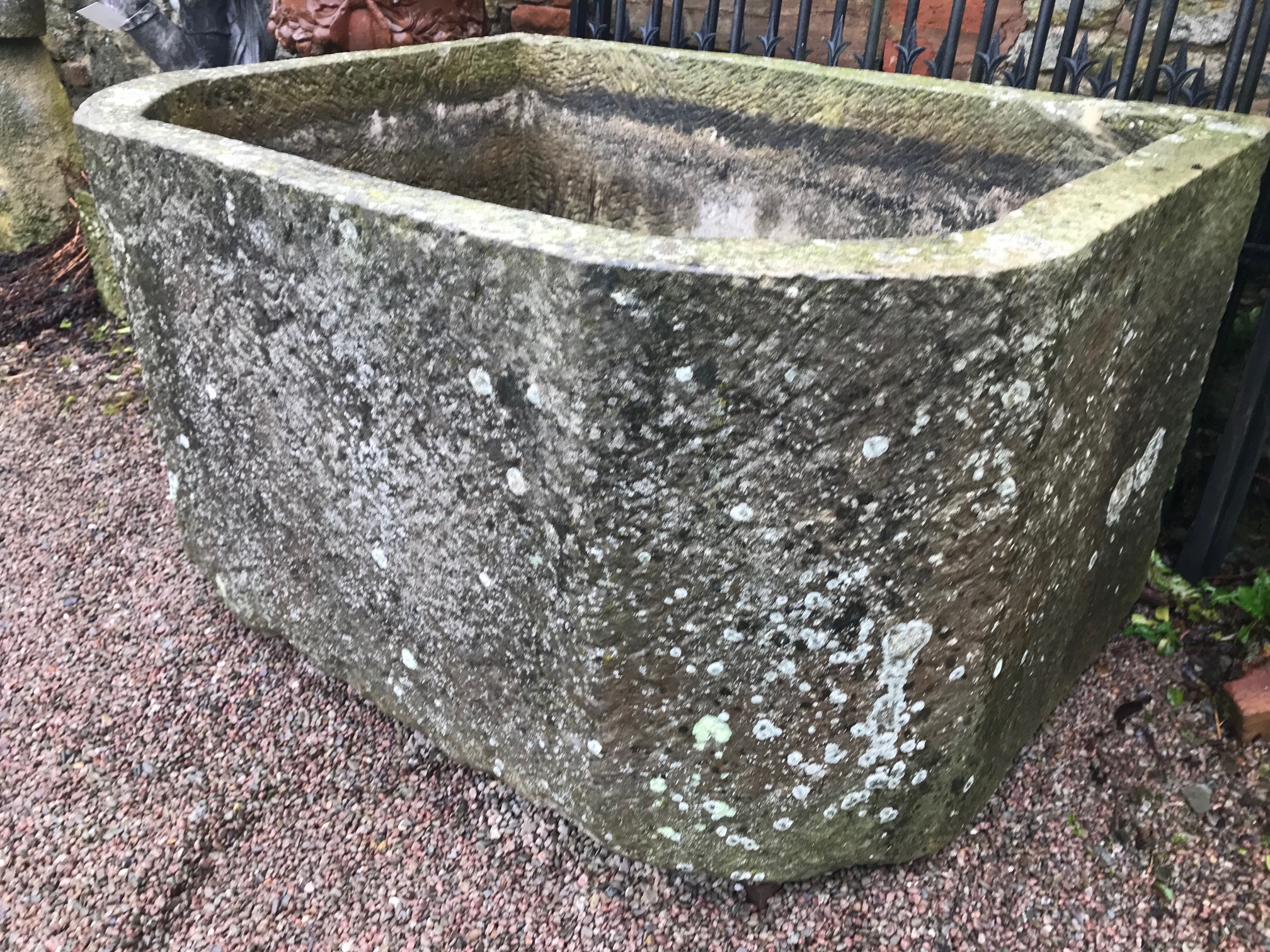 |
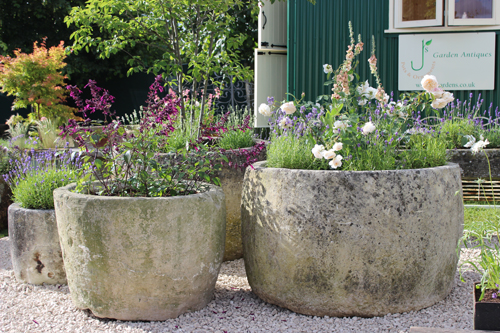
Winnie The Pooh
by A.A. Milne
"When you wake up in the morning, Pooh," said Piglet at last, "what's the first thing you say to yourself?"
"What's for breakfast?" said Pooh. "What do you say, Piglet?"
"I say, I wonder what's going to happen exciting today?" said Piglet
..........
Pooh nodded thoughtfully.
"It's the same thing." he said
We like...
The People's Sculptor" - Graham Ibbeson

I came across this little figure in a coffee shop in Salzburg recently which I instantly fell in love with. “Angel - Down to earth” is a bronze figure of an angel having to leave heaven. With suitcases and a face which melts your heart, the character of this figure is fantastic. I have since been lucky enough to see Graham Ibbeson's book which includes many other characterful pieces he has made over the years.
Based in Yorkshire, Graham is internationally renowned. His book “Graham Ibbeson The People’s Sculptor” is an absolute joy and I can highly recommend it to you.

Published in 2011 Graham describes how it: ‘focuses on my childhood and teenage years and examines my work, humour and skills and burrows into the artistic nooks and crannies in my mind.”
His humour shines out through his art and much of his work revolves around childhood. He has large public pieces also in many towns in the UK including one wonderful statue of Eric Morecambe in the Lancashire resort of Morecambe.
Industrial pieces in the garden
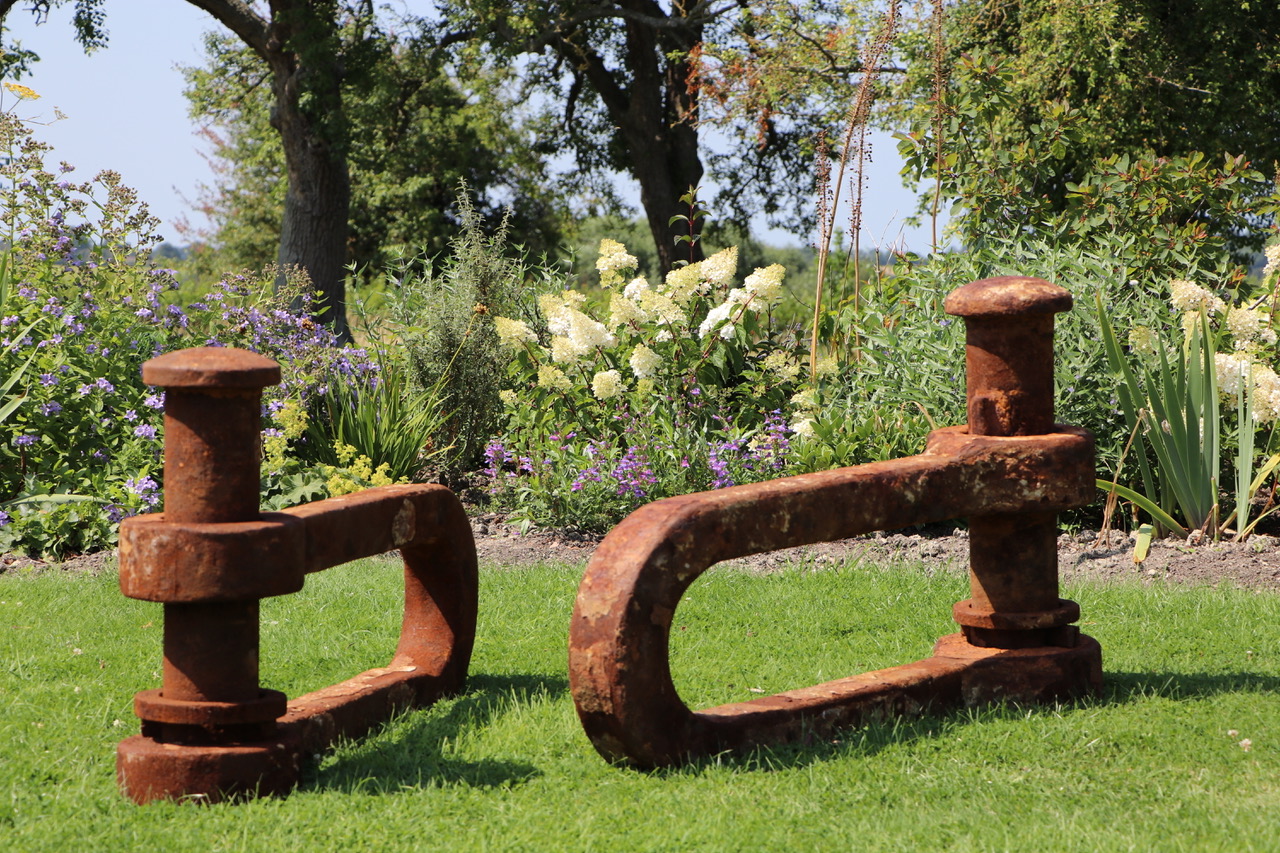
Cast iron shackles taken from the sea bed where they would secure ships at anchor. Sculptures in the garden. Gorgeously oversized and tactile.
Cheese vats of course – new use for working pieces for water or planting.
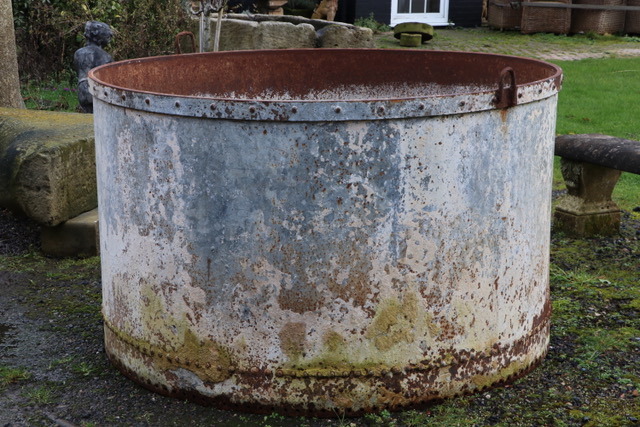 Large galvanised Tank - This oversized and unusual round large pot will make a wonderful oversized planter for a centre spot.
Large galvanised Tank - This oversized and unusual round large pot will make a wonderful oversized planter for a centre spot.
SIMPLE GARDEN SEATS
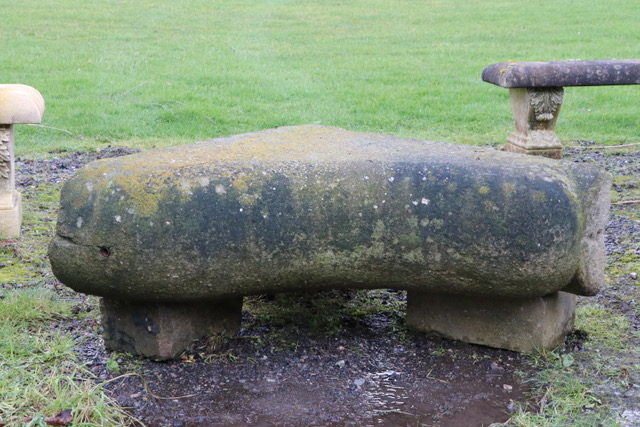
Simple garden seats are so valuable. Little perches by the back door to put on boots etc? A favourite place to stop for a moment or watch the sun go down. Whatever the reason, if a reason is even really required, a simple stone seat is invaluable in the garden.
Water - The Soul of the Garden
 We are lucky enough to live in a green and pleasant land in the UK and Europe – very much due to our abundance of water. Except for times of major weather events such as recently which are so destructive, we have always valued water in our gardens. It truly is the very soul of gardening in this country and indeed across the world and as such is often used as a feature.
We are lucky enough to live in a green and pleasant land in the UK and Europe – very much due to our abundance of water. Except for times of major weather events such as recently which are so destructive, we have always valued water in our gardens. It truly is the very soul of gardening in this country and indeed across the world and as such is often used as a feature.
Put so beautifully in Erik Borja's book Zen Gardens - "As a mirror of the sky and receptacle of the light of the stars, water gives the garden character and depth ..... The calm surface of a pool and the lively water of streams, springs, waterfalls and fountains express the disparate rhythms, music and emotions that accompany travellers who discover something new each day."
Looking back through time,“in the gardens of 6,000 years ago, water was the centre of life itself.” (David Stuart – Classic Garden Features). It was seen as sacred and a source of power as well as the basis of all life. The very earliest gardens were split into quadrants with water being channelled into a central water tank. As early as 600 BC this model was working to supply cities and farmlands with water from the mountains. The Romans later built huge water systems and aqueducts to supply their cities. Fountains in public spaces became a sign of wellbeing and of power. Ancient peoples right across the world – in India, South America, China started to use water in their gardens too. In the Renaissance gardens of Italy, in France in the 17th century and throughout Europe water features became more and more grand and glorious.
 Today on a much smaller scale and for each and every garden, we appreciate the atmosphere and sound water adds to our personal spaces. The serenity of still water or the power of moving water. In a formal setting and increasingly in a more natural format, we can have water in our gardens and we can enjoy the peace and tranquillity it brings.
Today on a much smaller scale and for each and every garden, we appreciate the atmosphere and sound water adds to our personal spaces. The serenity of still water or the power of moving water. In a formal setting and increasingly in a more natural format, we can have water in our gardens and we can enjoy the peace and tranquillity it brings.  It also encourages animals, birds and insects to our gardens which, for me is a central part of gardening - sharing the space with and providing for nature.
It also encourages animals, birds and insects to our gardens which, for me is a central part of gardening - sharing the space with and providing for nature.
We have recently dug a new pond in our garden which, once planted, I hope will encourage more and more natural visitors.
No matter how large or small a garden space is, water can be a feature. Increasingly people are turning to stone troughs or copper pots with pumps or spouts to provide them with the sound of water close to the house. It is very simple and we are always happy to advise our customers on the different options available to them and how to set them up.
And finally……………..

March is nearly here with Spring fully on its way despite the wet weather we have been having. It will soon be Chelsea Flower Show season. We will be exhibiting our 2020 collection and look forward to welcoming you onto our stand. We are in the same place as last year in Southern Row – SR34


